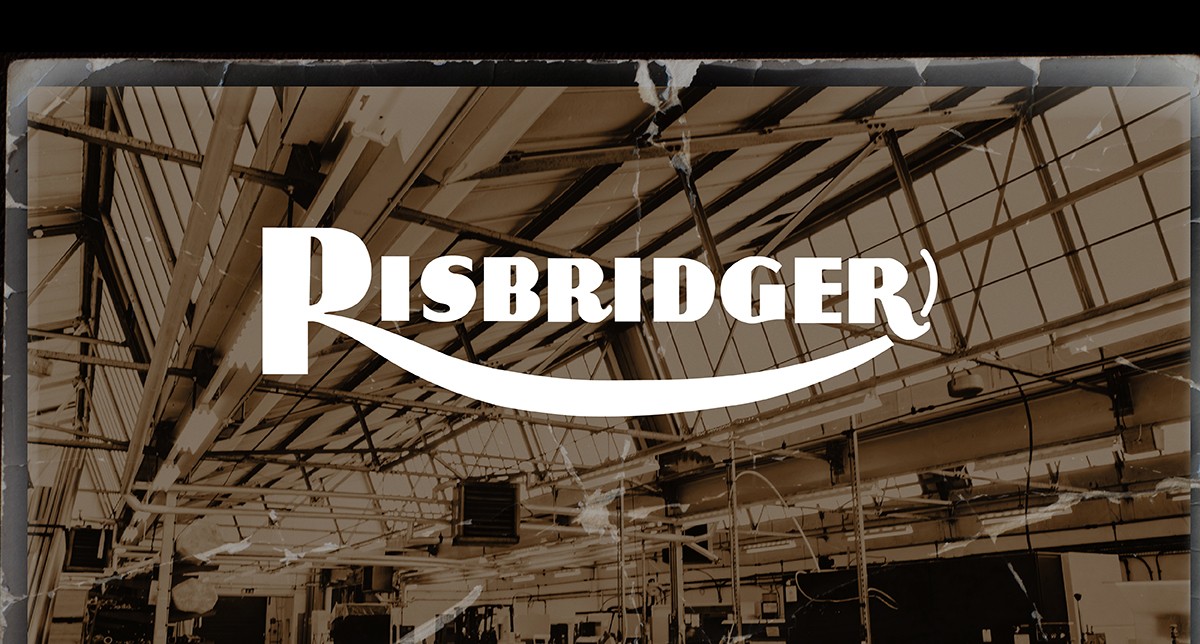As the name suggests, Risbridger is very much a family business. And with each generation to carry the Risbridger name, the company benefits from a fresh set of skillsets and approaches.
It all began with William Risbridger, a self-taught and brilliant engineer. Having left school at 13, William went from repairing bicycles and machinery for village residents to building his own factory, eventually designing petrol dispensing and measuring products.
William designed the roof structure of the Risbridger factory, built in angle iron, and the whole building was completed in just four weeks. With no cement mixers or lifting machinery, builders collected their own aggregates from a local quarry (by horse and cart) and made everything with hard manual labour and determination. When the factory was finally demolished, the contractors were surprised by the strength and durability of the structure – it took so much longer than expected to unpick!
William had always embraced innovation and new technologies. His son Gerry, now Chairman of Risbridger, recalls a pertinent example which enabled the family to find out about the outbreak of hostilities in 1939 “We were going on holiday in Dad’s Wolseley car, and we found out that war had broken out through the car radio. That was a very new-fangled thing to have at the time!”
A curious twist of fate during the war would lead to William making a lifelong friend and business associate. Hearing cries for help, he discovered a man in a barrage balloon that had broken free of its tether. Freeing the man by grabbing the balloon’s ropes, they became life-long friends. Later on this relationship led to, among other things, a contract for Risbridger to convert imported WAYNE pumps from the US to meet British Board of Trade standards.
Of course, engineering was an important contribution to the war effort. Over the course of the Second World War, W&J Risbridger joined forces with a group called the Southern Engineering Group, teaming up to make and assemble various components for the war effort. Women ran the machine shop, using belt-driven machinery in three eight-hour shifts.
William also had a building company and an airfield fuel installation company, installing tanks and dispensers for those vital small airfields. He later went on to design his own petrol dispensers and fuel flow meters.
Gerry was also a natural engineer, perhaps highly influenced by his surroundings as a child, with the Risbridger family home adjacent to William’s factory. He recalls how the factory was powered not just by large gas engines, but also a ‘battery shed’. Containing several banks of large batteries, this provided the energy for not just the lights in the factory, but also those in the home next door.
As Gerry was quick to point out: “Battery power is nothing new! Of course, nowadays batteries are so much smaller and lighter that we can use them for powering transportation – not just starting engines or running lights!”
Gerry also recalls how his grandfather was an advocate for sustainability and recycling. Timber packing crates for the imported WAYNE pumps from the US were repurposed in the fabric of the factory, and during demolition of the factory in 2004 we found timber with ‘Fort Wayne’ stencilled on it in various places. “Re-use, re-cycle, re-purpose – that’s not a new concept either – but we called it ‘waste not, want not’ in those days,” Gerry adds.
Unlike William however, Gerry’s natural knack for engineering was complemented by an extensive formal education, which included an apprenticeship at Birmid Industries in Birmingham. Known locally as The Birmid, the group was a co-operation of ten companies – including the Midland Motor Cylinder, Birmingham Aluminium Castings and Dartmouth Auto Castings – who employed tens of thousands before closing in the 1980s. Their expertise in producing aluminium aircraft engine castings in WW1 enabled Gerry’s training in the sand-casting methods which he was able to apply to Risbridger products. This ancient casting method is still widely used today.
Joining the company after his RAF service, Gerry became Managing Director in 1969. Since this time, he introduced computer systems for admin and accounts and CNC machinery, and was the first to learn and use CAD/CAM programming in our production processes.
Meanwhile the family traditions of Risbridger continued to live on. Like William, who had worked his brother John (hence W&J Risbridger), Gerry worked with two of his brothers, John and Barry.
Barry Risbridger remained with the company until his retirement in 1997. He produced a large volume of product designs and was a skilled draughtsman. He never did embrace CAD however – Barry refused to give up the pens and pencils, and many of his beautiful drawings and blueprints remain inspiring to look at. He also worked with airlines, oil companies and aircraft engine companies in developing our re-oiling pumps for aircraft maintenance.
Having previously worked in fine jewellery design and manufacture, William’s grand-daughter Annie Risbridger Hind brought a different set of skills with her when she joined the company. Although always interested and competent in mechanical work – like rebuilding the engines and bodywork of her first two Minis! – Annie additionally brought in aesthetic ideas, helping the company to produce its first logo and website, and taking part in exhibitions etc. As well as being involved in the social media and company image aspects of the business, she also embraced CAD/CAM, desktop publishing and other computer-based improvements to the operation of the company.
On occasion customers can make the mistake of thinking an improved aesthetic must mean a more expensive production process. When one such customer raised this concern, Annie pointed out that the fine turned finish on the component actually involved faster spindle and feed speeds on the lathes, so was actually more efficient. A real win-win!
At Risbridger we not only reflect on a proud history, but also eagerly await an exciting future. Embodying this is Keith Robinson, who joined us in 2014 and became Managing Director in 2019. His energy, experience in milling and turning in the rubber moulding industry, and his interest and skill in using CAD/CAM, has further evolved the modern processes that we utilise at Risbridger.
Risbridger provide quality engineering solutions, specialising in forecourt and aircraft ground service equipment.
Our enthusiastic team bring an effective blend of skills to our factory in Redhill, utilising state of the art CNC machine tools and CAD/CAM computer-based technology to manufacture our own products and sub-contract work.
Our priorities are:
– Developing high quality products that are safe, easy to use and environmentally protective
– Providing high quality output, excellent service and efficient product ‘life cost’
– Caring for the environment and promoting personal safety
– Following the principles of good engineering
Instagram: https://www.instagram.com/risbridgerltd/


